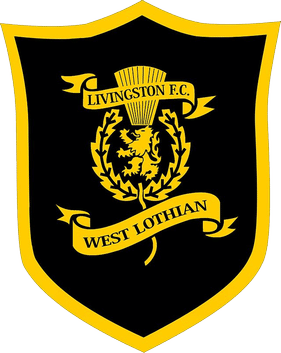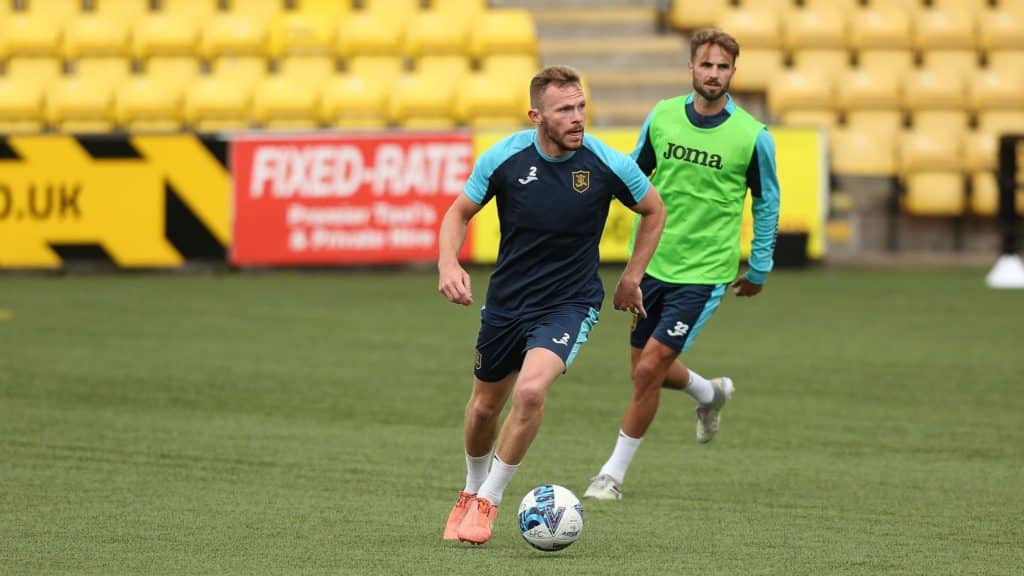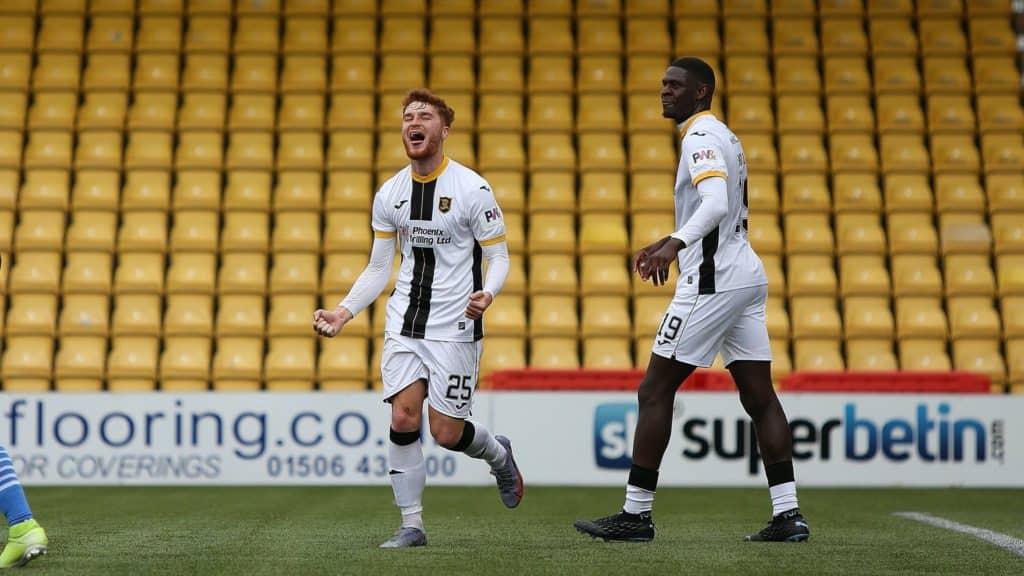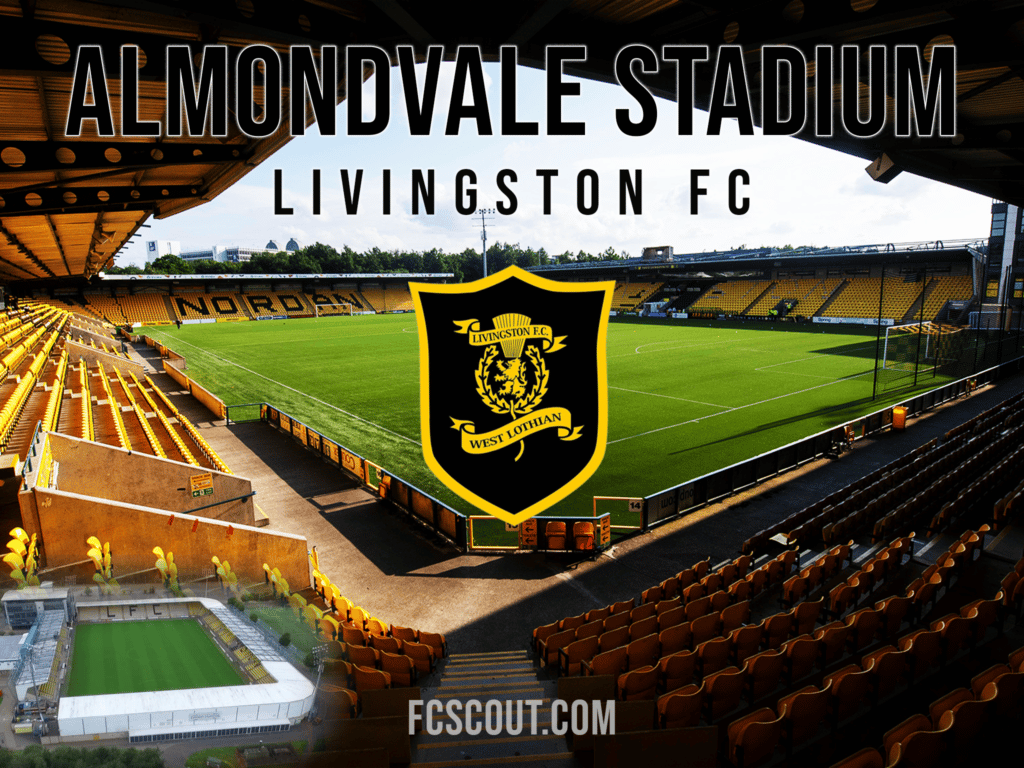Livingston FC Tryouts
Livingston FC is a Scottish professional football club based in Livingston, Scotland. The club currently plays in the Scottish Premiership, the country’s highest football league in Scotland.

Livingston FC Youth Development System
The Livingston FC academy currently has teams competing in various age groups such as:
- U11
- U12
- U13
- U14
- U15
- U16
- U18
Livingston FC Recruitment Trials
At the time of this writing, there are no official publishings on Livingston FC trials. Please come back at a later date while we monitor this club or click here to visit their official news page for the latest updates.

EXPLORE MORE CLUBS!
Explore more professional clubs by continent.
Livingston FC History
In 1943, the club was first established and known as the Ferranti Amateurs. Initially competing in the Amateur Second Division of the Edinburgh Football Association (FA), they were a works team of the engineering company Ferranti. In 1948, the club changed its name to Ferranti Thistle and started playing in the Edinburgh and District Welfare Association. They participated in this league for a total of five seasons before making the transition to senior football in 1953 and joined the East of Scotland League. In 1963, the club was successful in their bid for the East of Scotland Qualifying Cup during this time period. The club made the move to its current home at the City Park field in Edinburgh in 1969.
The club became members of the SFA in 1972, which made it possible for them to compete in the Scottish Qualifying Cup, which they eventually won in 1973. Prior to this, the club had not had access to this competition. On the 16th of December in 1972, the club played its debut game in the Scottish Cup, which was against Duns.
As a consequence of the dissolution of Third Lanark seven years earlier and the introduction of a three-tiered structure into the Scottish Football League, a position was made available in the second division of the competition in the year 1974. Ferranti Thistle was approved into the league by a vote of 21–16 over Inverness Thistle. This victory came after Ferranti Thistle defeated competition from four other Highland League sides, Hawick Royal Albert, and Gateshead United. Before the club could play in the Division, they had to overcome a number of challenges, such as having a name that did not comply with the strict SFL rules on overt sponsorship of clubs at the time and having a City Ground that did not match the required standards. The city council suggested making use of the contemporary Meadowbank Stadium, which had been erected in 1970. Meadowbank Thistle was selected as the name of the club following a contest that was run by the Edinburgh Evening News to pick a name for the club. The SFL gave their blessing for this just in time for the start of the new season.
As the inaugural manager of Meadowbank Thistle, John Bain was presented with the challenging challenge of producing a competitive squad in time for the start of the new season despite having a limited amount of time to assemble a squad from the existing Ferranti group. Meadowbank faced up against Albion Rovers in their first ever competitive match in the League Cup, however they were ultimately defeated by a score of 1-0. The club was finally demoted to the Second Division at the conclusion of the 1984–85 season, despite having gained promotion to the First Division in 1983.
The Meadowbank football team was successful enough in the 1986–1987 season to win the Second Division championship and earn promotion to the First Division.
They finished in second place in the First Division the following season, however because of league rebuilding, they were not allowed to advance to the Premier Division.
After the part-time club started having financial difficulties, it changed its legal structure to that of a limited corporation in 1993, but it was still demoted to the Second Division at the end of the 1992–1993 season.

Meadowbank was relegated for a second time in the 1994–1995 season after placing second-to-last in the Second Division. This time, the club was demoted because the Second Division was split into a Third Division. Following this, Meadowbank’s Chairman Bill Hunter asserted that the company had ran into significant financial difficulties and was now on the verge of closing its doors. Meadowbank Thistle moved to a new stadium in the new town of Livingston and changed their name again, this time to Livingston Football Club, in 1995. This decision was met with significant opposition from a significant number of Meadowbank fans, who objected to the dropping of the club name and the team moving from Edinburgh. Despite this opposition, Meadowbank Thistle moved.
They won the title of Third Division champions in their very first season playing under the Livingston name, which was the 1995–1996 campaign. After another three years, in 1998–99, they were crowned champions of the Second Division and achieved promotion to the First Division. Just six seasons after the team relocated to Livingston, they won the First Division championship and were promoted to the Scottish Premier League (SPL). This was the club’s second promotion since moving to Livingston. The first season that Livingston participated in the Scottish Premier League (SPL) provided the club more success, as they qualified for the UEFA Cup and ended in third place in the league (behind only the Old Firm). The team captained by Jim Leishman turned up a respectable performance in the UEFA Cup. After eliminating FC Vaduz of Liechtenstein on the away goal rule after a 1–1 draw, they came up against SK Sturm Graz of Austria, and after a 14-goal, two-leg affair, they were eliminated after coming out on the wrong side of an 8–6 aggregate scoreline. This caused them to miss out on the opportunity to play in the second round. The following year, the club finished in the top nine, which allowed them to escape being demoted. After this season, manager Jim Leishman became the club’s director of football and was replaced by Brazilian manager Márcio Máximo, who quit only a few months into the following campaign, and was in turn replaced by Davie Hay, who had been Leishman’s former assistant. Livingston won their first national trophy in 2004, under Hay’s direction, when they defeated Hibernian 2–0 at Hampden Park to win the 2003–04 League Cup. This victory was the culmination of Livingston’s run in the tournament. Derek Lilley and Jamie McAllister were the ones who ended up scoring the goals in the championship game.
The ascent of the club was only temporary, however, and on February 3, 2004, they were placed under administrative control. Livingston did not emerge from administration until the 13th of May 2005, following a period of financial turbulence in which the previous boardroom occupants were kicked out to make room for Pearse Flynn’s Lionheart Consortium. Flynn’s first choice was to fire Davie Hay, indicating that he wanted a younger man in command, and to that end, Flynn hired Allan Preston as the club’s new manager. Flynn’s first action was to fire Davie Hay, stating that he wanted a younger man in charge. Preston’s tenure as manager of Livingston kicked off on a positive note with a 3–0 victory over newly promoted Inverness Caledonian Thistle. However, the club did not win another league game while he was in charge, which led to his dismissal in November with the club sitting in last place in the Scottish Premier League (SPL). Richard Gough took over for Preston when he retired. and steered the club to survival on the last day of the season with a 1–1 draw with Dundee that relegated Dundee in their place, but Gough refused to stay as manager past the end of that season due to family problems and returned to the United States, and former Celtic player Paul Lambert succeeded him as the manager of the club. On February 11, 2006, Livingston manager Lambert resigned after leading the club to seven consecutive losses, which put Livingston in last place in the Scottish Premier League standings. John Robertson, a former player who is now a coach, took over in his place. In spite of the manager’s best efforts, his team, Livingston, was relegated for the first time in May 2006 after earning a total of only 18 points throughout the season. It was the poorest record in the history of the Scottish Premier League, and the only time it was bettered was by Gretna during the 2007–08 season, when they were docked 10 points for entering into administration.
On April 15, 2007, John Robertson was fired from his position as manager of Livingston as a result of the team’s poor performance in the First Division in 2006–07. On the 22nd of May in 2007, it was reported that former Hibernian assistant coach Mark Proctor would take over for him. On June 26, 2007, Proctor selected Curtis Fleming to serve as his assistant. However, both of them were fired the following year in June 2008 following a dismal season in which they placed seventh. After Pearse Flynn sold his shares in June 2008, Angelo Massone, Tommaso Bruno, Alessandro Di Mattia, and Tommaso Angelini, who were all Italian majority owners, took control of Livingston throughout the summer of that same year. The Italians were rumored to be close to signing fellow Italian Roberto Landi as head coach in June, and on June 11, 2008, he was given the position of manager of the First Division team. After only five months in charge, both he and his assistant Valter Berlini were terminated from their positions on December 1, 2008. On December 3, 2008, Paul Hegarty was rumored to be a candidate for the position, and on December 5, 2008, he was officially given the job. Following that, Hegarty was fired from his position as manager on April 26, 2009, and his contract was allowed to run its course.
The day when the club faced a deadline to settle debt to West Lothian Council, who controlled Almondvale Stadium, John Murphy was appointed head coach of the team. This appointment took place on June 30, 2009.
As a result of the fact that this objective was not accomplished, legal action was taken against the club, and it was given fourteen days to reach an agreement with regard to the debt or face the possibility of being forced into administration once more. On July 24, 2009, the Court of Session in Edinburgh placed Livingston into administration. The club was in danger of being demoted to the Third Division, having points deducted from their record, or being kicked out of the Scottish Football League entirely. Livingston faced all of these outcomes. On July 27, 2009, it was disclosed that the club was set to go into liquidation after the owner, Angelo Massone, stated that he would reject a $25,000 offer for the club from its administrator. The administrator was attempting to purchase the club from Angelo Massone. On July 28, 2009, Massone rejected the offer for a second time, and as a result, the administrator began the process of liquidating the company’s assets. Livingston appeared to be doomed, but a meeting with the Scottish Football League on July 30, 2009 saved their lives. At that meeting, the Scottish Football League agreed to let prospective new owners Gordon McDougall and Neil Rankine (part of the Livingston 5 Consortium) run the club for the following season. This meeting ensured that Livingston would continue to exist. The following day, Massone quit the club and sold his shares to the new owners. It was also stated that John Murphy would be returning to his prior post as goalkeeping coach, and that ex-player Gary Bollan would be taking over as the team’s new manager. In the first game after the new owners took control, Livingston were on the receiving end of a cup upset in the first round of the Scottish League Cup. They were defeated by Albion Rovers, a team two divisions below them, by a score of three goals to zero.
In spite of the fact that the prospective new owners had guaranteed that Livingston’s future as a professional football club would be secure for at least the following year by paying a £720,000 bond to the SFL, on August 5, 2009, the Scottish Football League took the unprecedented step of demoting Livingston to the Third Division. The primary factor that led to this conclusion was a violation of the guidelines regarding insolvency. After the decision was made, the administrator of the club, Donald McGruther, expressed his fear about the future of the organization by saying, “In my view, this signals the death knell of Livingston Football Club.” A member of the Livingston 5 Consortium named Gordon McDougall was quoted as saying, “We’ve got to consider all the choices that are open to us — it makes it very, very tough.” Due to the substantial reduction in revenue, it was anticipated that the club would not be able to continue existing in the Third Division. Nevertheless, the group persisted with its offer to purchase the club even after the decision was made and the anticipated financial repercussions were revealed. On August 8, 2009, the club decided not to play their inaugural match in Division Three, which was scheduled to be against East Stirlingshire. This decision was made because an appeal was filed. As a result of this, the club faced the possibility of having points deducted from their total, although in the end, they were only issued a punishment of £3,000 for their behavior. This was ultimately reversed on the club’s appeal, which means that they did not face any consequences for their decision to boycott the match in the end. On September 7, 2009, a further appeal to the SFA was turned down, and the club ultimately agreed that they would be placed in the Third Division.
On the 15th of August 2009, Livingston kicked off their season in the Third Division with a home match against Montrose, which they won easily by a score of 2-0. On April 17, 2010, Livingston clinched the title of champions of the Scottish Third Division after playing Berwick Rangers to a scoreless draw in their home stadium. Roddy McKenzie, the team’s goalkeeper, made a crucial save in the 91st minute to save Almondvale from losing the championship. The Lions finished the year with 78 points, which was 15 points more than Forfar Athletic, who finished in second place. The following year, on April 9, 2011, Livingston secured the Second Division title with a second consecutive title win to earn promotion back to the Scottish First Division with a 3–0 victory over Stenhousemuir at Ochilview Park. This victory earned them promotion back to the Scottish First Division. After serving as manager for two and a half years, Bollan was terminated from his position on February 9, 2012. On the fourteenth of February 2012, nine days later, John Hughes and John Collins were named to the positions of manager and director of football, respectively. On the other hand, it was revealed on the 13th of November 2012 that Hughes had left the club in order to become the manager of Hartlepool United. Gareth Evans was promoted from his position as assistant manager to that of manager, and he took over managerial responsibilities. However, on February 28, 2013, he was terminated from his position due to “concerns concerning his management.” Following that, Collins tendered his resignation from his post as the director of football. On March 25, 2013, Richie Burke was hired as the new manager, while Mark Burchill was promoted to the position of assistant manager. Livingston finished the 2012–13 season in fourth position in the First Division. This was the club’s best performance in the league since they were demoted from the Scottish Premier League in 2006. On the 12th of September 2013, Burke handed in his resignation from his position as manager, and John McGlynn was subsequently hired to take over for him. When McGlynn took control, Livingston had only one point to their name and were in last place in the Scottish Championship. As a result of the club’s increased success under his direction, the organization is now in the running for the promotion play-offs. As a direct consequence of this, in January of 2014, he was given a contract extension. In the end, Livingston finished in sixth position during the 2013–14 season.
However, the following season was a struggle for Livingston, and the team was in serious danger of being demoted. McGlynn left Livingston by mutual consent in December 2014, following a 1–0 home defeat by Falkirk, which placed the team in last place in the league, four points below Cowdenbeath, the club that was in second last place. Mark Burchill was hired to take over as the club’s manager from McGlynn. The club struggled not only on the field but also off of it throughout the course of this season. During the 2010–11 season, the team was penalized five points by the Scottish Professional Football League (SPFL) for failing to pay tax on bonuses that were handed out. Former club director Ged Nixon made an attempt to have the court freeze the club’s financial accounts because he claimed the club owed him a sum of money totaling 300,000 pounds. The news gave rise to concerns that the club will have to file for bankruptcy for a third time as a result of this. Nixon was unsuccessful in his legal battle in April 2015, which spared the club from experiencing this outcome. In the final match of the 2014–15 Scottish Challenge Cup, which took place at McDiarmid Park, Livingston defeated Alloa by a score of 4-0. With only two matches left in the season, Livingston were mired in last place in the league. They trailed relegation opponents Alloa by three points and Cowdenbeath by four. The club moved into 9th position in the table based on goal differential after a 4–0 victory away at Raith Rovers. This victory propelled them into the last game of the season. Livingston were able to pull off the “great escape” by defeating Queen of the South in their final game of the season at home by a score of 1-0. This allowed them to finish in eighth place, escaping both automatic relegation and the relegation play-off.
During the 2015–16 season, Livingston were once again in a fight to avoid being demoted. After a 1–1 tie with Dumbarton in December 2015, with Livingston sitting in second-to-last place in the league, Burchill was dismissed from his position as manager. David Hopkin was promoted to the position of manager after him. However, there was not going to be a significant breakthrough this season. Due to the fact that Livingston ended in ninth place in the Championship, they were required to compete in the Championship Play-Off in order to keep themselves from being demoted to Scottish League One. In the play-off semi-final, they had a matchup against Stranraer. The first leg of the match was played at Stranraer, where Livingston was defeated there by a score of 5–2. They now face an extremely challenging job in the second leg. Livingston came out on top with a 4–1 victory after 90 minutes of play in the second leg of the tie, sending it into extra time. However, two goals scored by Stranraer in extra time brought the final score to 4–3 on the day and 6–8 on aggregate. This result confirmed Livingston’s relegation to League One, bringing an end to their five-year stay in the second division of English soccer.
In spite of being demoted, Livingston made the decision to continue operating as a full-time football club, and they kept David Hopkin on as manager for the 2016–17 season[100]. Livingston’s primary objective was to earn promotion back to the Championship. After that, Livingston cruised to an easy victory in the league and clinched the championship in April 2017, after defeating Alloa Athletic by a score of 2–1 at home. At the end of the season, Livingston finished first in the league by a comfortable margin of 19 points.
After 20 games in the 2017–18 Championship season, Livingston sat in the play-off places in a tie for third place in the league. This impressive form carried over from the previous season.
The team also competed in the Scottish League Cup and made it all the way to the quarterfinals, when they suffered a heartbreaking loss to Hibernian by a score of 3–2. Since the 2005–2006 season, this was the first time they had made it to this stage of the League Cup.
After beating Brechin City by a score of three to zero on the 21st of April 2018, Livingston ensured themselves a spot in the Championship’s runner-up spot.
They won their final game and qualified for the Premiership play-off final, where they faced Partick Thistle, who had won their last game and avoided automatic relegation. Despite this, Livingston prevailed by a score of 3–1 on aggregate, 2–1 at home and 1–0 away. With this victory, Livingston earned the final place in the Scottish Premiership and their first season of top-flight football since 2006. Partick Thistle was sent down to the Championship as a result of Livingston’s victory, bringing an end to Partick Thistle’s run in the Premiership over the past five years.
Livingston FC Stadium
As Ferranti Thistle, the club first played in local parks before finding a home at City Park in Edinburgh in 1969[3,] then moved to Meadowbank Stadium in 1974, which was built for the 1970 Commonwealth Games. Over the course of their history, the team has had three primary grounds. The Almondvale Stadium in Livingston is where the Livingston football team plays its home games at the moment. As a result of a sponsorship arrangement, it is currently referred to as the Tony Macaroni Arena.

The stadium, which has a capacity of 9,512 spectators, was built in 1995 as a result of a partnership between Meadowbank Thistle and the Livingston Development Corporation (LDC). The town of Meadowbank Thistle was going to be renamed Livingston as part of the agreement, and moving there was one of the conditions of the transaction. Following the dissolution of the LDC, ownership of the Stadium was given to West Lothian Council. Since that time, West Lothian Council has rented the Stadium out to the club. As a result of issues with their ground sharing at Fir Park, Gretna were forced to play one of their home games at this venue, which has also played host to matches involving Scotland’s under-21, under-19, and under-17 teams. Because West Lothian Council is looking to sell the current site to a supermarket chain, it was revealed in April 2011 that it was possible that Livingston would move to a new stadium located approximately one mile from the current site. The reason for this possibility was due to the fact that West Lothian Council was looking to sell the current site.






